|
|
|
|
Products mentioned in this Article
--None--
|
|
|
|
|
|
|
|
|
 |
|
|
|
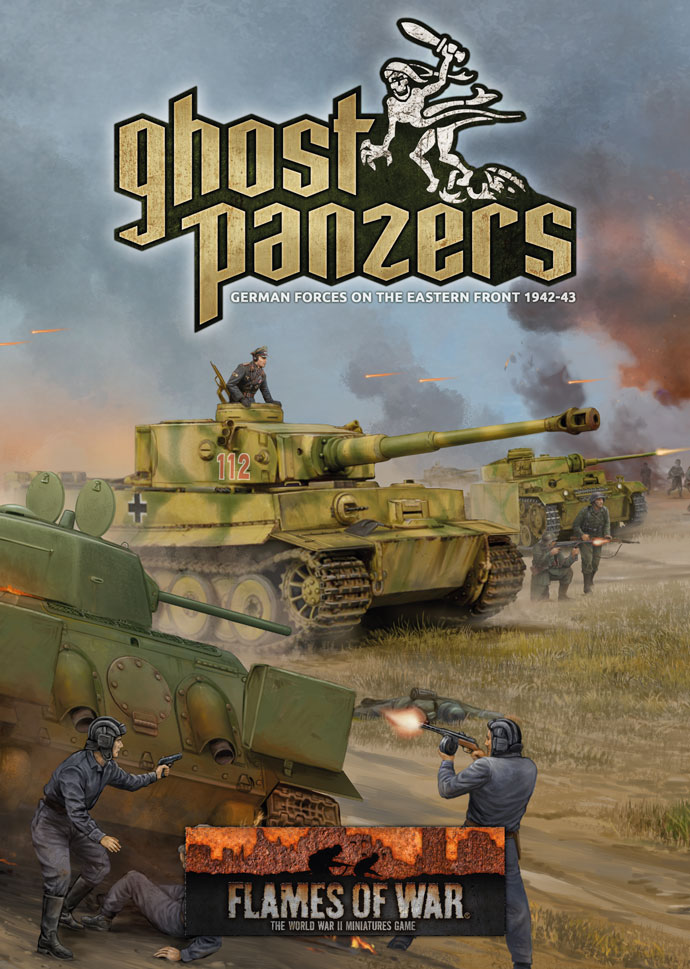
|
Ghost Panzers Spotlight
Ghost Panzers centres on the action around Operation Citadel, also known as the Battle of Kursk. It was here in July 1943, that one of the war’s largest tank battles took place, with over 2450 German tanks and assault guns. Over 3600 Soviet tanks were waiting for them, setting the scene for the largest tank battle on the Eastern Front.
Join Mike as he takes a look at what is in store for players in Ghost Panzers.
Ghost Panzers Spotlight...
Check out Ghost Panzers in the online store here...
|
 |
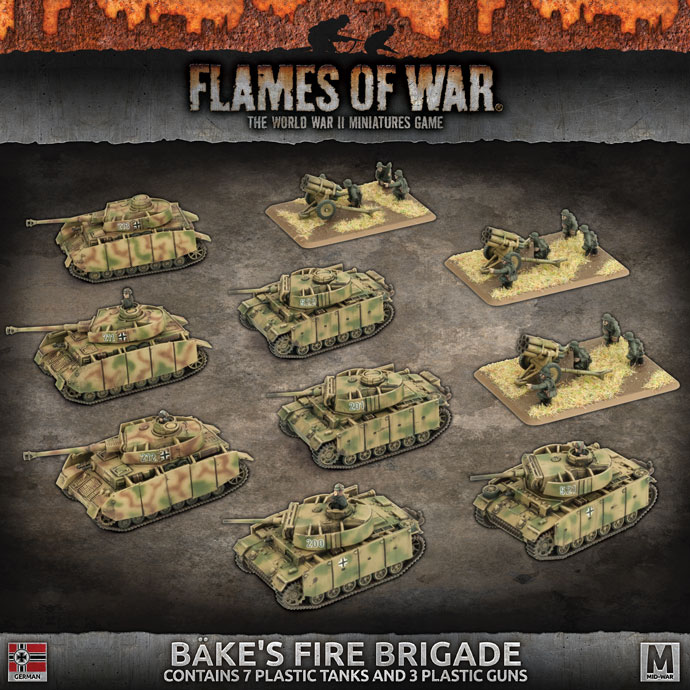 |
Bäke's 'Fire Brigade (Plastic) (GEAB17)
Hartmann wiped sweat and dust from his forehead with a muttered curse. 'Hold here,'
he called down through the open hatch and braced himself as the panzer slowed to a halt in the grass of the steppe. He peered up the slope ahead, seeing tan dust rising to meet the gathering clouds from beyond the crest. 'Turret, front – fifteen degrees. Get a bead right on the top of that ridge'.
Looking ahead he saw the other tanks in his platoon had halted. He thumbed the transmit button on his microphone.'Loaders, ready with reloads. That’s a lot of dust so look alive.'
Bäke's 'Fire Brigade (Plastic) (GEAB17)...
|
|
Panzer IV (Late) Tank Platoon (Plastic) (GBX121)
Panzer IV tanks have received a new longer barrelled 7.5cm gun, making it ideal for taking out Soviet medium tanks. Like the Panzer III, the Panzer IV also received more frontal armour and sideskirts as well as Zimmerit paste applied to the body of the tank to prevent magnetic anti-tank weapons sticking effectively. More than capable of holding its own in battle, the Panzer IV would not be outshone by the Panther.
Panzer IV (Late) Tank Platoon (Plastic) (GBX121)...
|
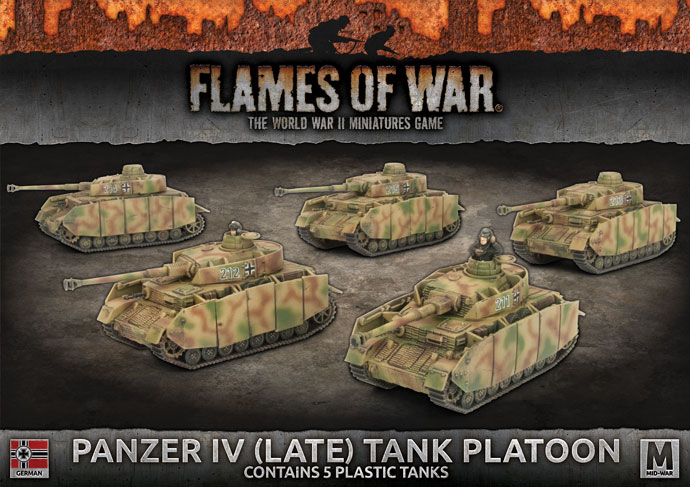
|
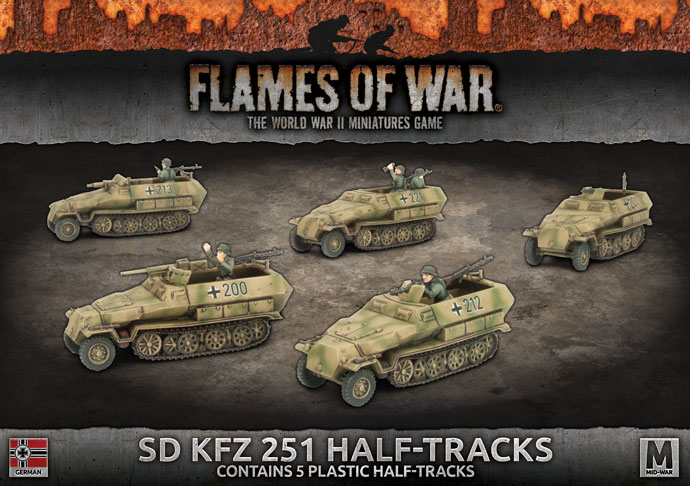 |
Sd Kfz 251 Half-Tracks (Plastic) (GBX124)
Panzergrenadiers were able to support the tanks using armoured Sd Kfz 251 half-tracks or trucks. The armoured half-tracks allowed them to drive onto the battlefield and get in much closer to the action before dismounting. The Sd Kfz 251/1C half-track served its passengers admirably during Germany's early blitzkrieg campaigns in 1941. Its armour is bullet-proof, allowing them to get in close and support the tanks with infantry assault power.
Sd Kfz 251 Half-Tracks (Plastic) (GBX124)...
|
|
Armoured Flame-thrower Platoon (GBX125)
Armoured Flame-Thrower Platoons mount a fearsome flamethrowers on the armoured Sd Kfz 251 halftrack, combining speed and armour with fearsome jets of fire.
Armoured Flame-thrower Platoon (GBX125)...
|
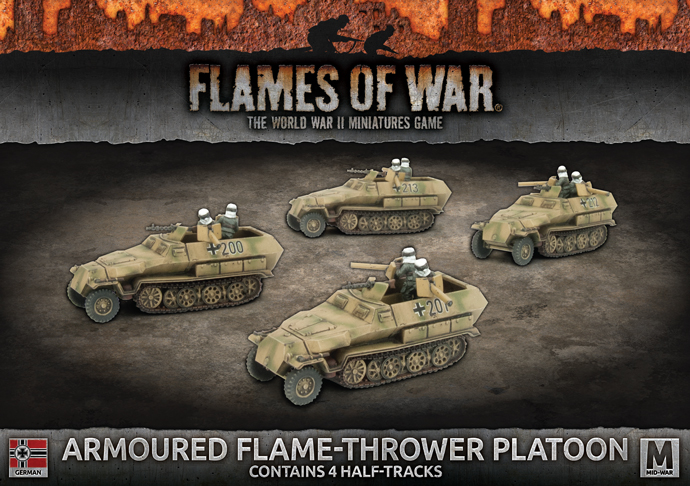
|
|
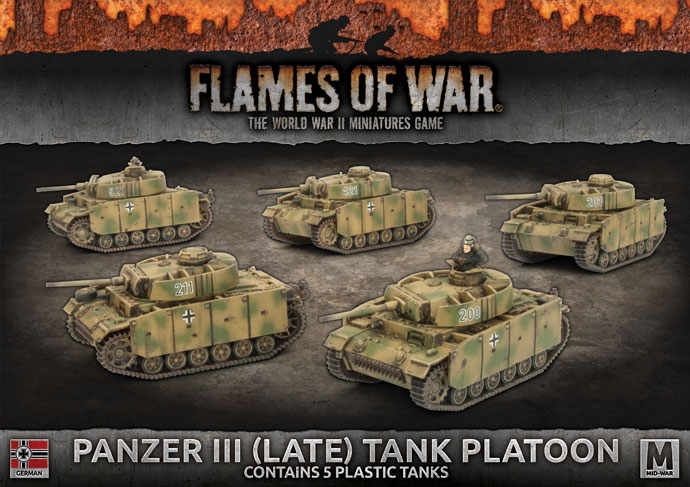
|
Panzer III (Late) Tank Platoon (Plastic) (GBX122)
The 7.5cm gun version of the Panzer III proved an able support weapon but by the summer of 1943, despite its long and proven battle record, the tank was starting to show its age. To remedy this, it was uparmoured to bring it up to date. Ideally, the panzer divisions were meant to have two battalions of Panthers and one with Panzer IV tanks. While the tankers waited for the production lines to catch up with this demand, the units had to make do with older, but uparmoured, Panzer IIIs.
Panzer III (Late) Tank Platoon (Plastic) (GBX122)...
|
|
StuG (Late) Assault Gun Platoon (Plastic) (GBX123)
The original StuG was designed as an infantry support weapon, but in response to skirmishes with Soviet armour it was upgraded with an anti-tank gun and the StuG (Late) was born. With their low, turretless silhouette they proved most effective in defensive roles and were especially deadly when carrying out ambushes. Schürzen skirts were added for further protection from enemy hand-held anti-tank weapons.
StuG (Late) Assault Gun Platoon (Plastic) (GBX123)...
|
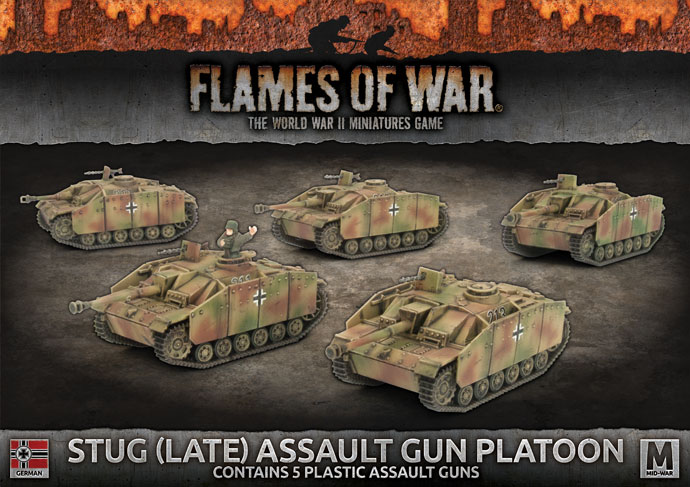
|
|
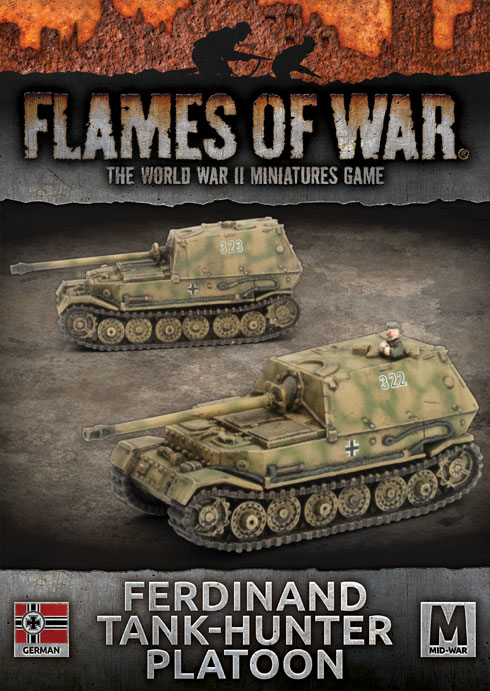
|
Ferdinand Tank-hunter Platoon (GBX127)
The Ferdinand Tank-hunter is a fearsome anti-tank vehicle. Not only a can-opener, the Ferdinand is unmatched in armour with 200mm (8") of frontal armour. This protection will keep the tank in operation, even while under intense incoming fire. The 8.8cm Pak43 is the most powerful gun currently in service. This combined with its armour gives the Ferdinand dominance of the battlefield.
Ferdinand Tank-hunter Platoon (GBX127)...
|
|
Panther Tank Platoon (GBX126)
Operation Citadel was delayed to allow time for the Panther tank to make its way to the front Though a high priority was put on the new tank production was delayed due to a lack of specialized machine tools needed for the hull. The first tanks came off the production line in December 1942. The long 7.5cm gun and 100mm of frontal armour on the Panther easily outperformed Allied or Soviet tanks on the field, giving the German crews a sense of invulnerability. The Panther was the most formidable of the German medium tanks and packed one hell of a punch. It was armed with the 7.5cm Rheinmetall KwK42 (L/70). It carried 79 rounds in the tank.
Panther Tank Platoon (GBX126)...
|
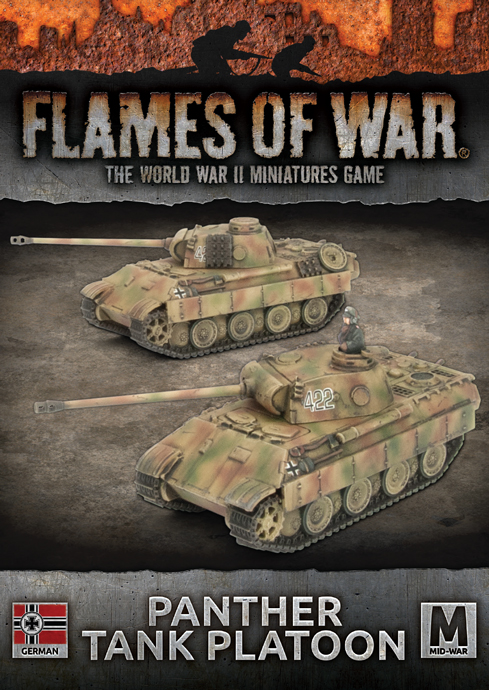
|
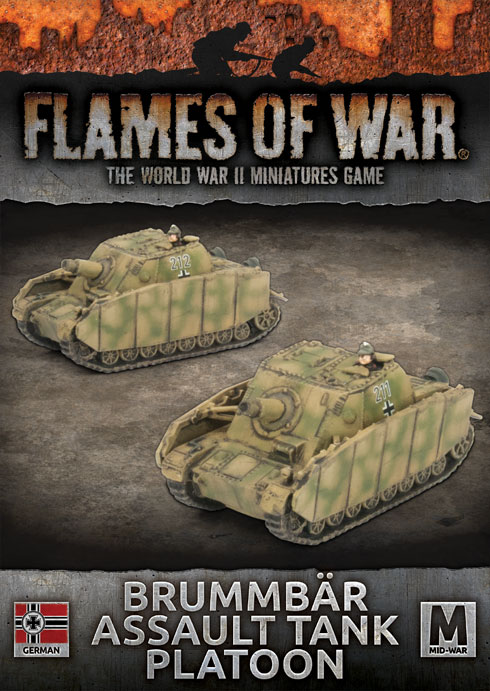 |
Brummbär Assault Tank Platoon (GBX128)
The Brummbär's mission is to blast an enormous hole in the enemy's infantry and gun positions. To do this without being knocked out by enemy anti-tank guns, the Brummbär has over 100mm (4") of frontal armour. The tank's 15cm assault howitzer will have no problem shattering enemy fortifications. This is represented by its Brutal rating and AUTO firepower when used directly against dug in enemy units.
Brummbär Assault Tank Platoon (GBX128)...
|
|
Hornisse Tank-hunter Platoon (GBX130)
The Hornisse (Hornet) was another brand new vehicle rushed to the front to take part in Operation Citadel. The vehicle was armed with the new and powerful 8.8cm PaK43 gun, the same found in the Ferdinand heavy tank-hunters.
Built on the Panzer IV hull, the Hornisse was easy to maintain, and devastated Soviet armour wherever they were stationed. It had 30mm of hull front armour, but only 10mm on its superstructure. It had a crew of four and an additional machine gun for local and anti-aircraft defence.
Hornisse Tank-hunter Platoon (GBX130)...
|
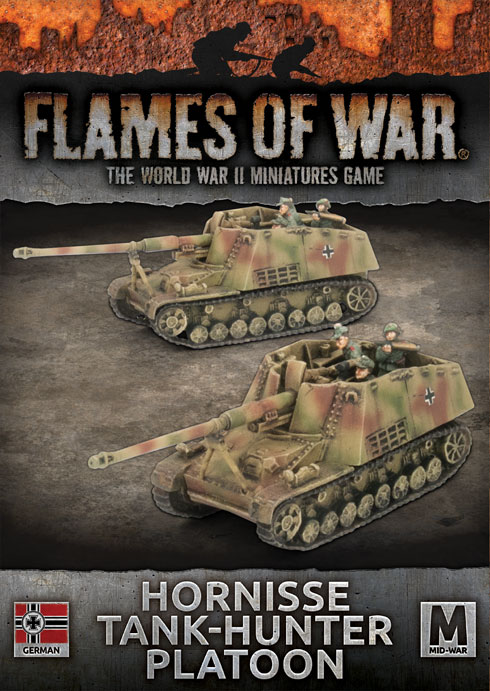
|
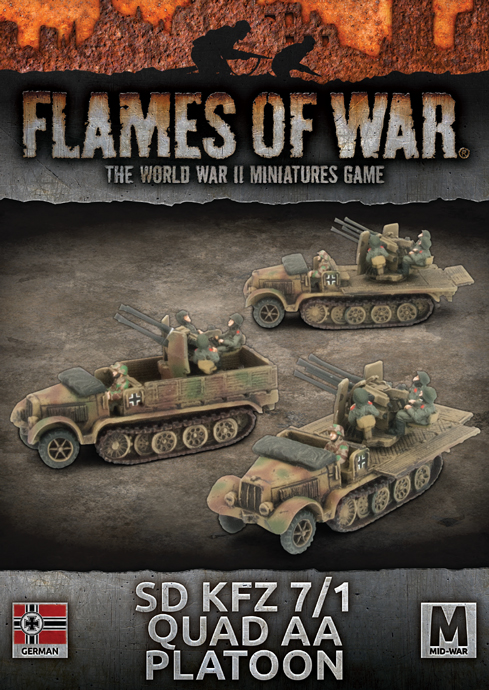 |
Sd Kfz 7/1 Quad AA Platoon (GBX134)
The Sd Kfz 7/1 half-track was armed with a quad-firing 20mm anti-aircraft gun, giving each vehicle a tremendous rate of fire of 1800 rounds per minute. With that much fire in the sky, Soviet aircraft had a very difficult time attacking panzer spearheads.
Sd Kfz 7/1 Quad AA Platoon (GBX134)...
|
|
Luchs Scout Troop (GBX131)
The Panzer II Luchs (Lynx) was a great departure from other Panzer II tank designs. The hull was modified and the road wheels were redesigned and enlarged to give it exceptional speed through terrain. The Luchs was ideal for scouting ahead of panzer units, being able to go into and through the same sort of terrain that the tanks were operating in.
Luchs Scout Troop (GBX131)...
|
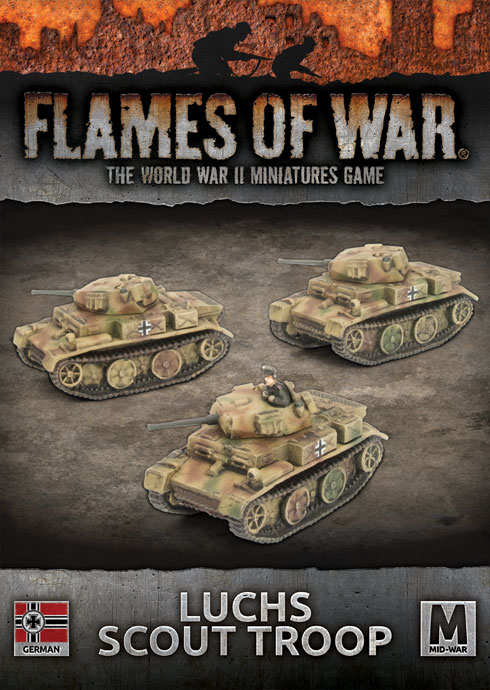
|
|
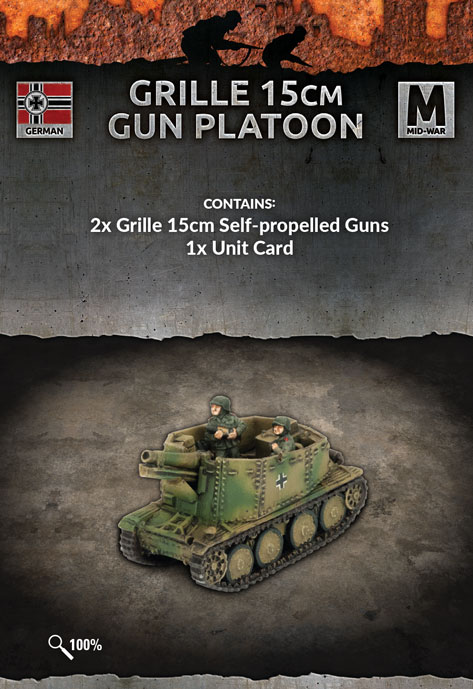
|
Grille 15cm Gun Platoon (GE142)
Unlike the lighter 7.5cm infantry gun, the 15cm howitzer couldn't be mounted aboard a Sd Kfz 251 half-track, so instead the Germans experimented with using several different out-dated tank chassis. By 1943, the result was the Grille (Cricket) self-propelled 15cm gun. This gave the panzergrenadiers their own high-calibre, mobile guns to shatter enemy strongholds.
Grille 15cm Gun Platoon (GE142)... |
|
Hummel Artillery Battery (GBX132)
In 1942 the Waffenamt (Ordnance Department) saw a need for self-propelled artillery for the Panzer Divisions. Initially a design for a 10.5cm howitzer mounted on a Panzer III/IV chassis was considered, but with the advent of the Wespe 10.5cm self-propelled howitzer on the Panzer II hull the design was changed to mount the 15cm howitzer. The new gun was based on a lengthened Panzer IV hull with some mechanical elements from the Panzer III. The prototype was named the Hummel (Bumble-Bee). It was armed with the 15cm sFH 18/1 L/30 howitzer mounted in an open topped fighting compartment.
Hummel Artillery Battery (GBX132)...
|
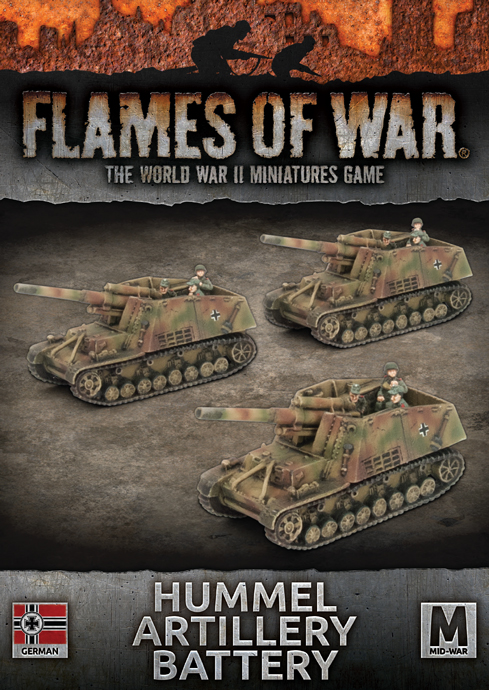
|
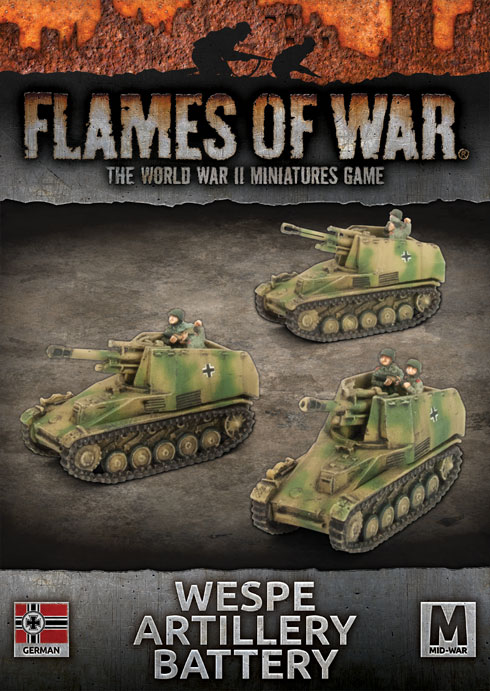 |
Wespe Artillery Battery (GBX132)
The Wespe (Wasp) self-propelled howitzer first saw action at Kursk in 1943. Based on the reliable Panzer II chassis, the vehicle proved well suited for supporting armoured units. Its weapon was the standard 10.5cm leFH18 howitzer, which provided excellent artillery firepower to the panzer divisions they supported.
The initial Wespe units had their first major engagement at Kursk and performed well in the initial phases suppressing the defending Russian troops as the Panzers rolled forward.
Wespe Artillery Battery (GBX132)...
|
|
8.8cm Tank-hunter Platoon (GE532)
The legacy of the famously versatile 8.8cm FlaK36 anti-aircraft gun on the Eastern Front began with its ability to deal with the heaviest Soviet tanks, such as the KV-1. The 8.8cm FlaK36 anti-aircraft gun is accurate out to a range of several kilometres, giving it the ability to knock out tanks beyond the range at which they can reply—High-velocity 8.8cm armour piercing rounds can penetrate any tank in service, and have no difficulty knocking out just about any tank at any range.
8.8cm Tank-hunter Platoon (GE532)...
|
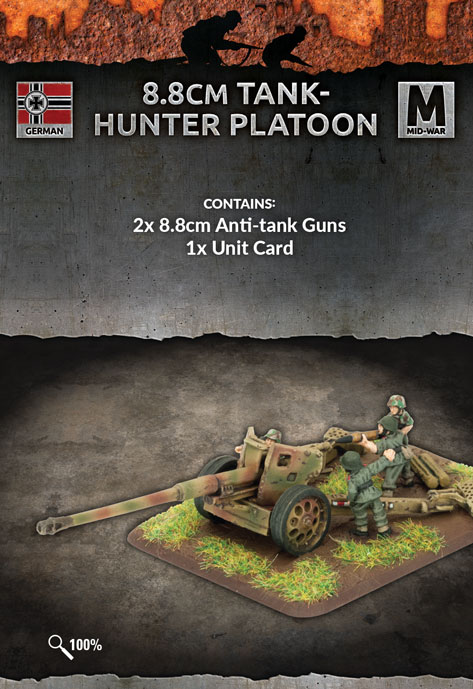
|
|
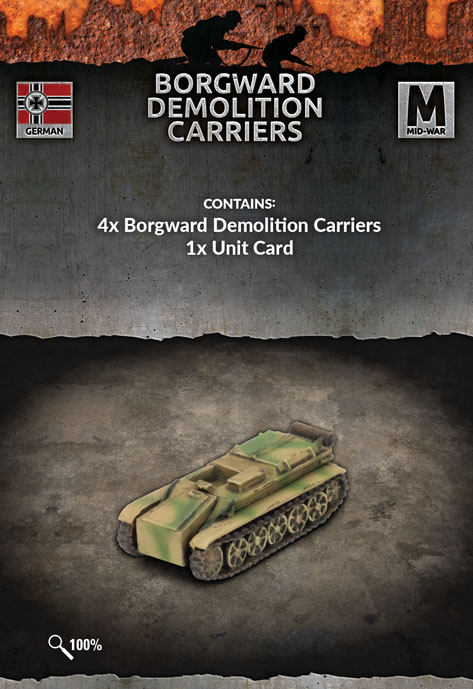
|
Borgward Demolition Carriers (GE611)
After the invasion of Poland, the German army needed a solution to quickly clear mines ahead of a blitzkrieg attack. Early experiments using mine-rollers and Panzer I tanks carrying demolition packages met with limited success. In 1940, the German automobile manufacturer, Borgward, designed the B IV, a small one-man tank that could carry and deliver a 500kg explosive demolitions package. In the final attack run, the tank could be remotely controlled to the target and detonated, preferably after having dropped off the explosives and saving the Borgward carrier. Trials were successful and, by early 1942, the 300th Panzer Battalion (Radio Control) was created and shipped to the East Front in May 1942.
Borgward Demolition Carriers (GE611)...
|
|
HS 129 Battle Flight (GBX135)
The Hs 129 went into action in early 1942 as the first dedicated ground-attack aircraft. The pilot was protected by an armoured 'bathtub' to keep them safe during their low-level attack runs. This rugged aircraft served all across the Eastern Front, as well as in Tunisia.
HS 129 Battle Flight (GBX135)... |
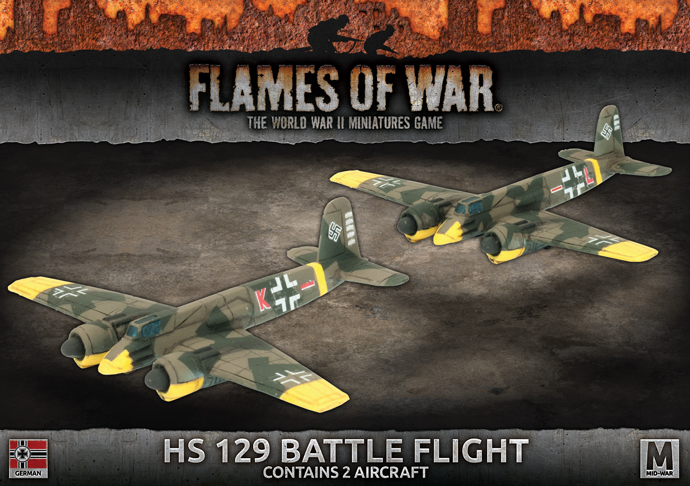
|
|
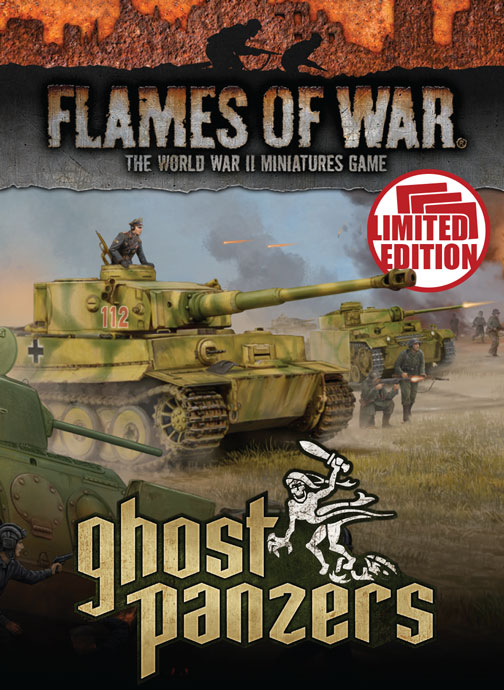
|
Ghost Panzers Unit Card Packs (FW251U)
For a limited time only boxes of Unit Cards will be available for each Flames Of War Mid War book. The packs will contain one of each Unit Card that relates to their book. The packs have been designed to assist existing players that have already bought our miniatures and built their armies under previous editions and want cards to help transition to V4.
Ghost Panzers Unit Card Packs (FW251U)...
|
|
Ghost Panzers Command Cards (FW251C)
Command Cards allow Flames Of War generals to field iconic warriors, build new types of units, field new types of equipment, enhance your commander’s capabilities, and bring new tactics and strategems to the battlefield.
Ghost Panzers Command Cards (FW251C)...
|
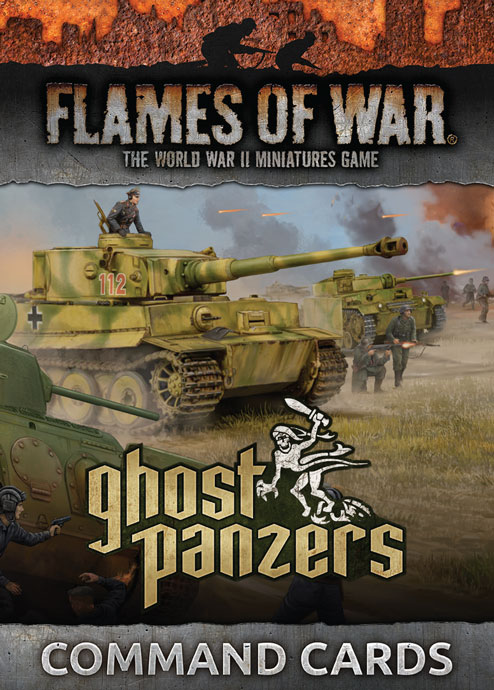
|
 |
|
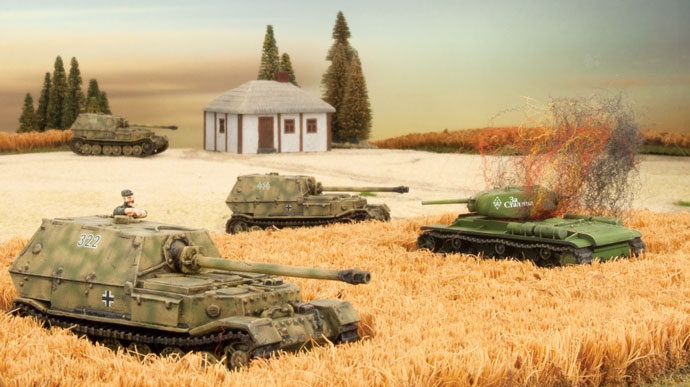
|
Fielding Schweres Panzerjäger-Regiment 656
A player wishing to field a force that represents Schweres Panzerjäger-Regiment 656 in Flames of War has a lot of great options with the release of Ghost Panzers. In this article Michael goes through some of the historical force organizations, and how best to represent them on the table using Ghost Panzers, Iron Cross, and a few applicable Command Cards as well.
Fielding Schweres Panzerjäger-Regiment 656...
|
Last Updated On Friday, February 15, 2019
|
|
|